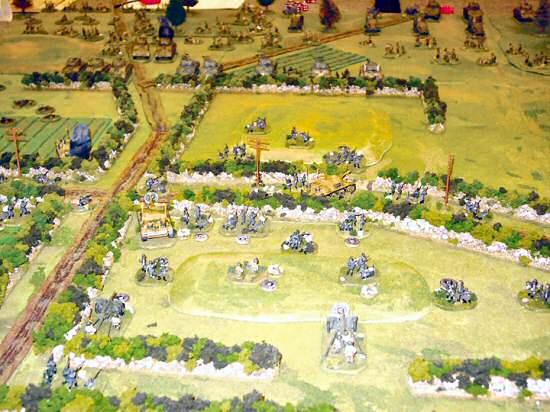Renaissance Ink makes a line of flocking gels - X-Fine, Fine, Medium, and Coarse - and I decided to see what I could do with them.
I had two figures on my workbench that had just been painted up for a future Fantasy project. They were mounted on round steel disks, and I had already applied plaster to smooth the contours around the cast-on bases. Now, I wanted a texture that would look appropriate for dungeon-gaming.

I decided to experiment with the Medium Gel on the wizard, and the Fine Gel on the skeleton. The difference between the gels is that the medium has a grit mixed in (sand?), while the fine gel is smooth.

I used the Small Gel Knife - also known as a "mini palette knife" - to apply both gels. The fine gel is easily applied, and I used my best "frosting the cake" swirls to try to give it some interesting texture. Due to the grit, the medium gel doesn't spread around like the fine gel does - I find it best to apply a small portion, then pat it into place.

The instructions don't mention a drying time, and I wasn't sure how hard the dried gel would get, so I waited 24 hours. By this time, the gel is hard to the touch, but will take an imprint if you press your fingernail into it. The fine gel has dried to a translucent white, so that you can see brown paint through it. In fact, it's translucent enough that it's hard to see my swirls...

Next, I painted the bases with a grey basecoat, a black ink wash, and two drybrushes with shades of grey.

I thought the effect on the skeleton base turned out fine, though I'm anxious to experiment with different gel-knife techniques to see what other textures I can do. For the wizard's base, I think I can do better - it would look better with the grit spread all the way to the base edge, and I think the paint got a bit thick (it looks a bit like asphalt).








